Julien’s wish for this, his first year as Vineyard Manager: “A Harvest.”
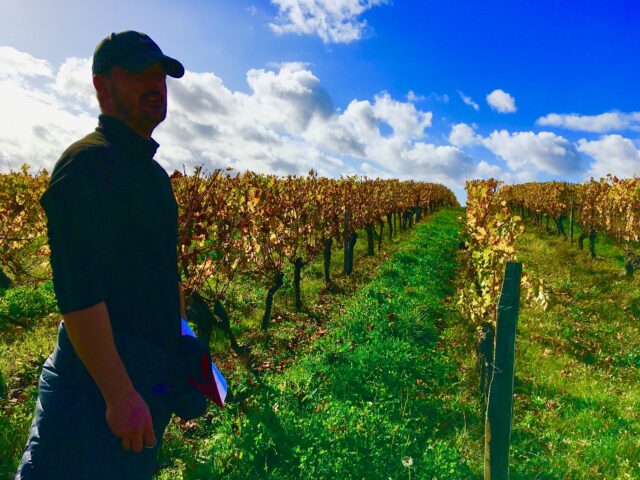
People thought he was joking. Nothing grander than that?
… or was he clairvoyant?
It was a year of frost and hailstorms that ruined the work of many. It was a summer of unprecedented heat and drought. Tomatoes got sunburned and cooked on the vine. Fruit shrivelled on the trees. Far-off fires filled our air with smoke. The usually rambunctious dog panted in the shade. Even the forest seemed to have trouble breathing.

Conditions which sent us scrambling in mid August, with local workers still away on holiday, to prepare an early harvest. Julien’s first cuvée. Our first “Bubbly” made from Cabernet Sauvignon. Pink and zesty and effervescent for celebrations. A draught of hope for unsettling times.
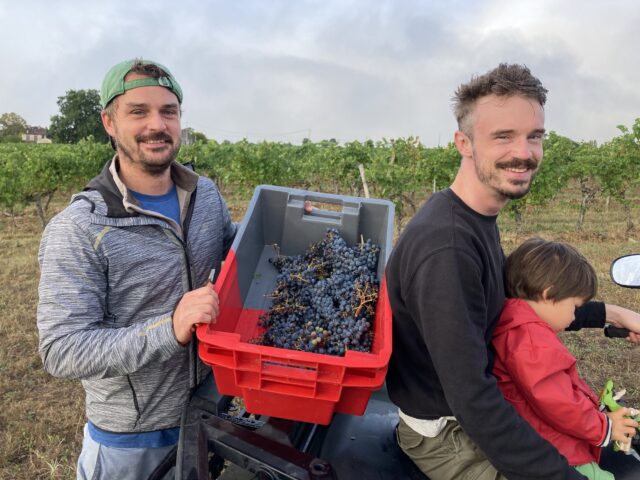
Despite the odds, a good harvest. Somehow, the vineyard held on. Some say it’s this particular terroir: the water-retaining limestone clay soil and the proximity of the vine roots to limestone flint bedrock where they can seek water in the cracks.
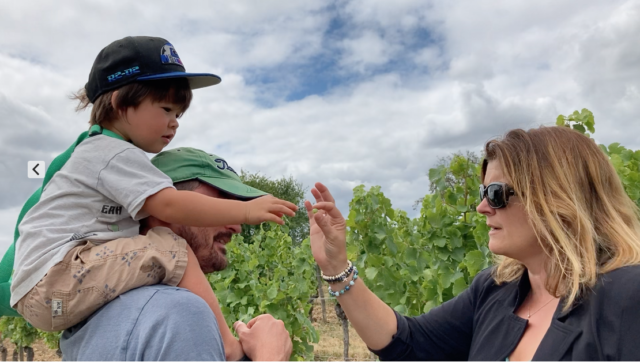
Some say it’s also the loving touch of the vineyard hands.
We were all there on the ground this year to help Julien husband the earth. So for those who imagine winemaking as a glamorous endeavour, here’s a look at Julien’s first year. Images to show the vigneron’s daily and seasonal tasks and concerns – the humble side of the story behind our favorite elixir.
Winter:
Pruning continued through the winter. It’s not ideal to prune in the rain but Julien was eager to finish before the birth of his baby, so there he was rain or shine.
Vineyard maintenance goes on… Removing the clips that hold the wires in place. (Repeated in reverse in summer when we lift the vines and put the clips back.)
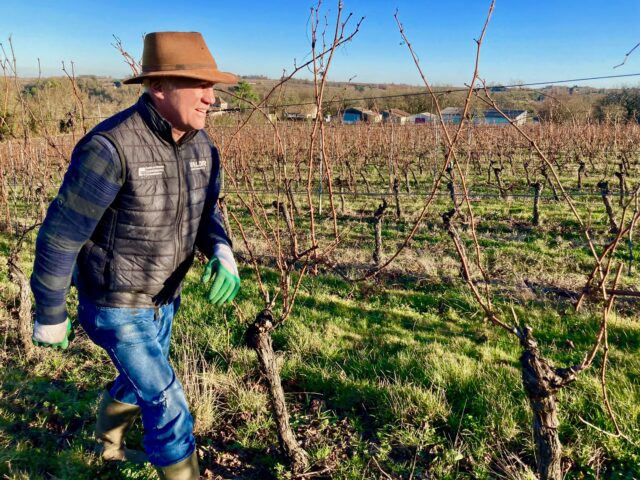
Replacing the posts. Once again a set back – we ordered traditional wooden posts that come from acacia trees in Romania. But they were out of stock because the truck drivers – Ukrainian – went home to fight in the war. Eventually we picked up metal posts (made in France.) Not as pretty but they work.

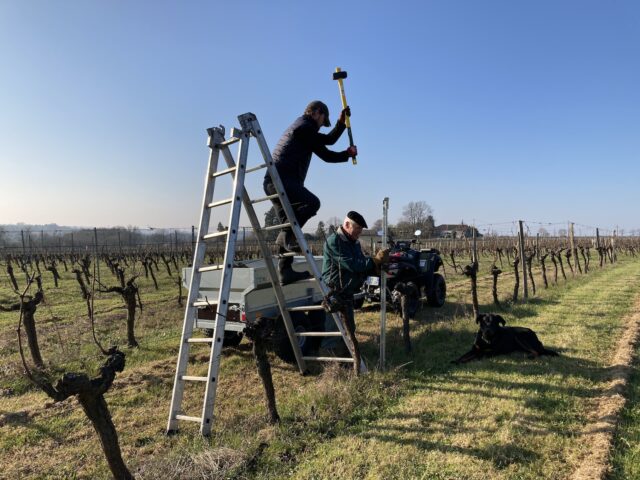
Winery activities rarely stop – we bottled Rosé “L’Esprit de Jeanne” on a frozen morning…
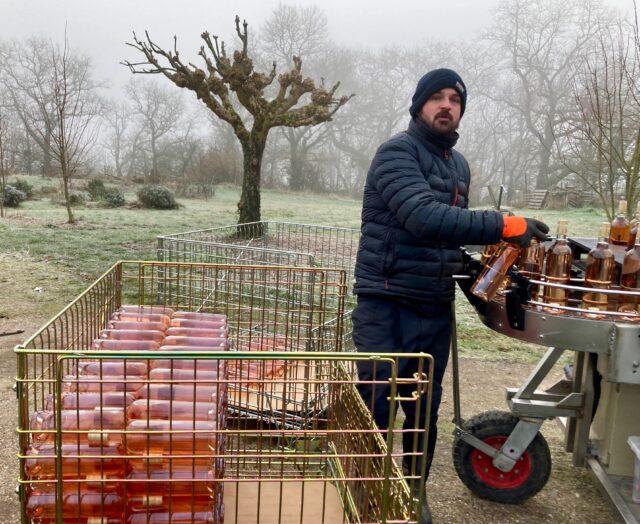
… and filled our barrels with delicious Sceptre vintage 2021.
January brought a blessed deep freeze. We were grateful for a period of real cold to kill off some of the dormant pests in the earth.

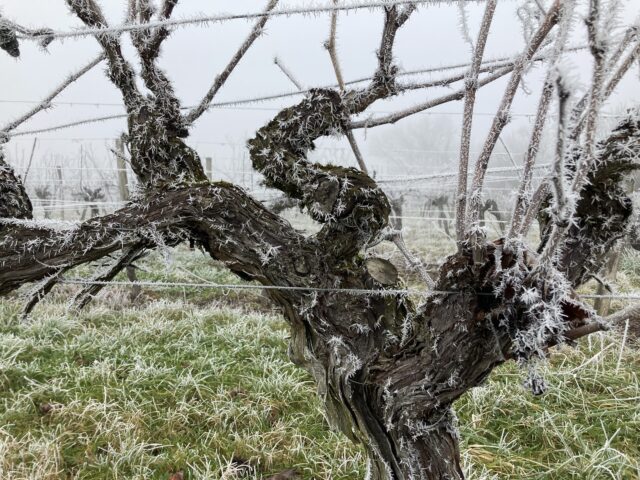
Of course cold means feeding the fireplaces. Chainsaws in the woods, hauling up and splitting logs… Need to warm the nest for the new born – Carol & Julien brought home a baby boy in February.
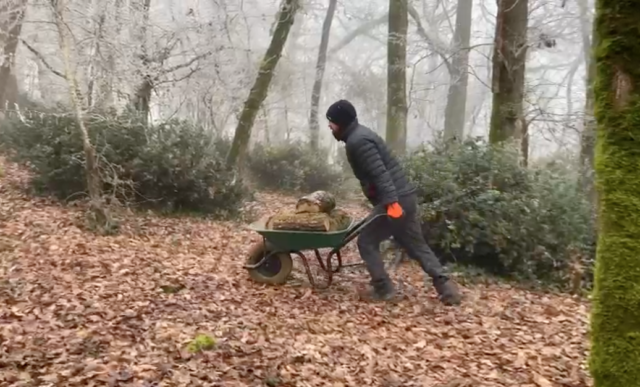
The vineyard’s unique Total Body Workout – “tirer les bois.” Julien rips away the old vine canes twined around the wires. Then these wood sarments are mulched and returned to the soil. (Except for the ones saved for summer BBQ.)
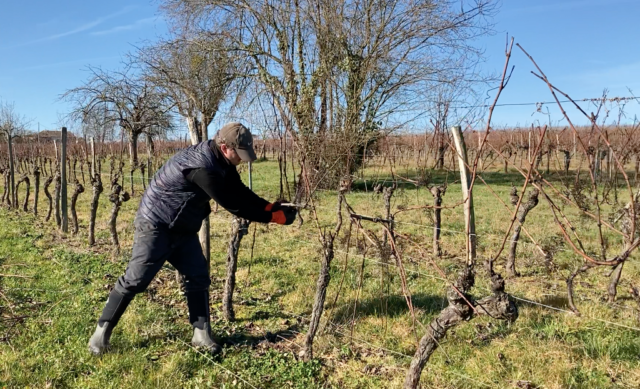
Spring:
The orchard, hedges, surrounding woods, bats in our attics, mechanical weeding – all encourage an abondance of pollinators and micro-organisms, essential to the land. These practices harken back to the days before industrial agriculture when biodiversity was the general rule, not something you did to fix a problem.
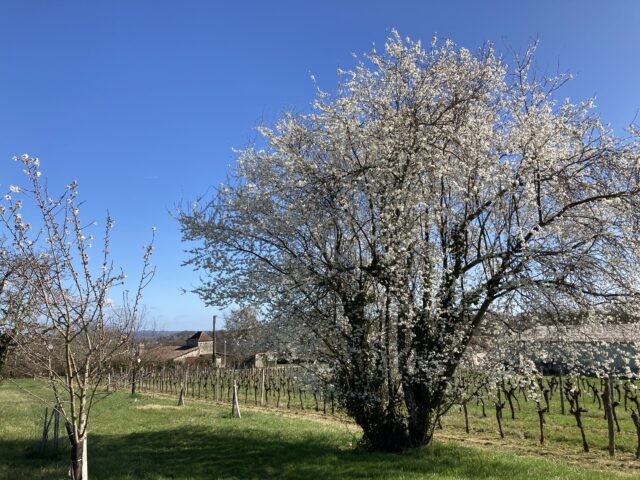
Spring also means – hurry up, get all that green under control. Too much green will compete with the vine roots for water and nutrients in summer. But the mower and other equipment still haven’t arrived because of this year’s intense supply chain problems. Thus our joy when at least the new Quad comes in. An essential all purpose tool and vehicle (and a bunch of fun for all ages…)
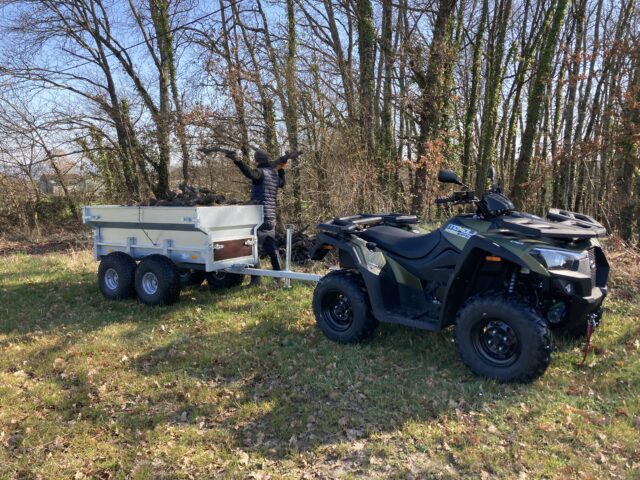
Maintenance continues: Fix the wires that get cut accidentally while pruning.
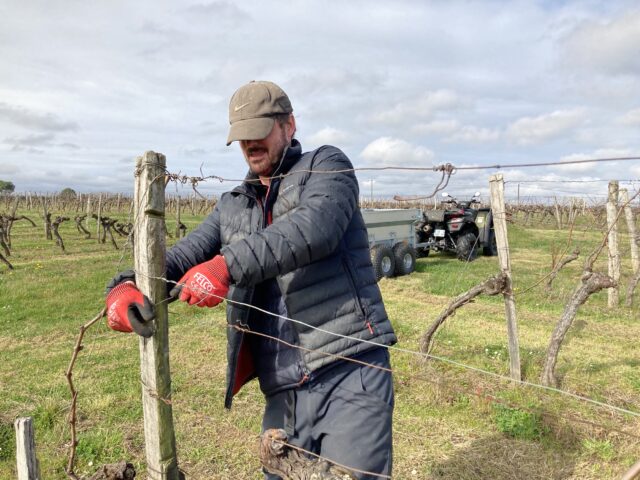
Pliage: While the primary cane is still flexible Julien bends and attaches it to the wire.
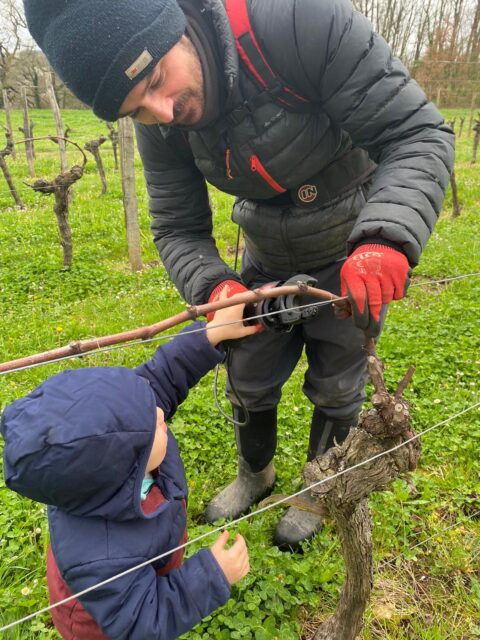
Appearance of the first vine buds at the end of March.
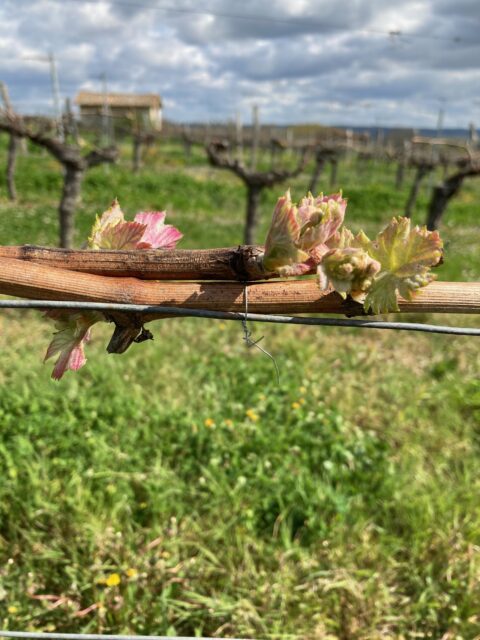
Here’s a glimpse of the sap “weeping.” It rises according to the moon cycle and drips from the “wound” where it was cut last Fall.
April: Good news. Equipment starts to arrive.
Bad news. How does it work?
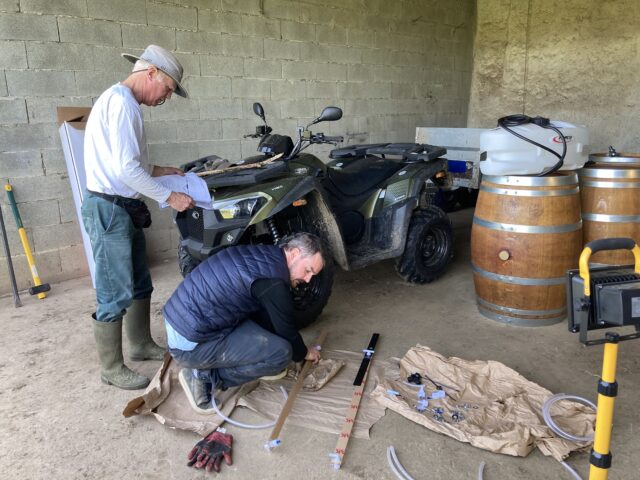
Great news. The Tractor arrives. Finally. And it’s a RED tractor!
First job, spreading fertilizer, a mix of manure and the residue of grape skins… With an enthusiastic junior partner.
Meanwhile, Carol and Julien waged heroic efforts to open the Taverne. The pandemic wrought havoc on the restaurant industry, but the Taverne held on. It was a great season with a great team.
May: We left for 3 weeks to visit our Distributors in the USA. Necessary for the business but terrible timing as the vineyard is at its most demanding. A true test of mettle, the home team coped on their own. And when a large order suddenly came in, they brought their toddlers and worked the whole weekend of Julien’s birthday to get it done.
June: Back on the ranch, a mad frenzy to help catch up. John & I join Julien in the vineyard.
Relevage: Row by row, lift the wires and tuck in the long or stray vines. Carefully, so that each cluster has good exposure to sun (for ripeness) and space between clusters to avoid rot. We all agree, this is the most tiring task.
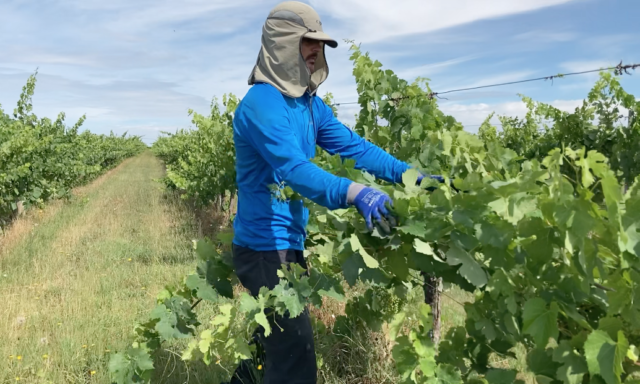
Rognage: Once the vines are nicely tucked in, Julien uses sharp blades to trim the tops and the sides. He says this machine gives him nightmares since news goes round every year that someone cut off a finger.
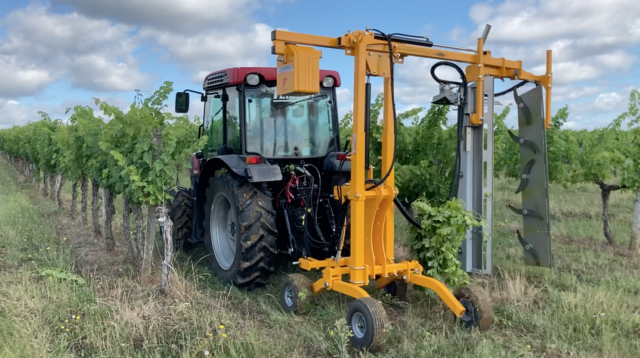
Interceps: More blades. This machine cuts the surface roots to encourage the vines to go deeper for water and nutrients. It removes the weeds at their feet (which compete for food & water and increase the risk of mildou) without using chemicals. Precision work between each plant to avoid actually cutting the vines. The interceps create a mound of earth around the feet – you see this technique in most organic vineyards.
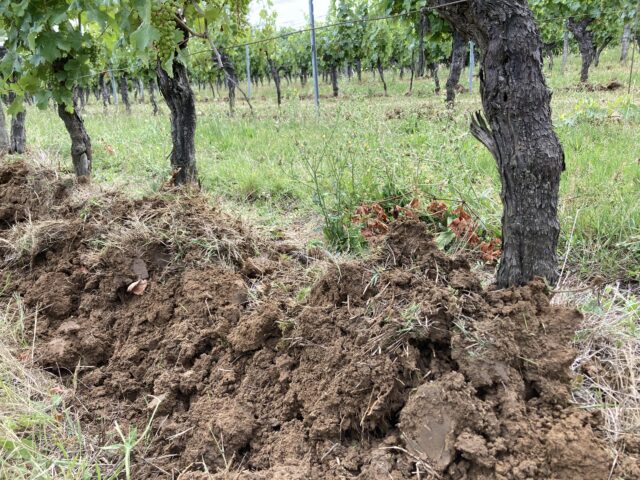
Summer:
Weeding: After a rain, time to turn over the soil to uproot the competing plants. Just every other row, and only a few centimetres so as to not disturb the oxygen loving critters on the top or the anaerobic ones deeper down.
But a bit of panic – the equipment still hasn’t arrived.
Thus a big cheer when a young neighbour comes to the rescue. While this Prince Valiant lends us a hand, Julien goes to his place to help.
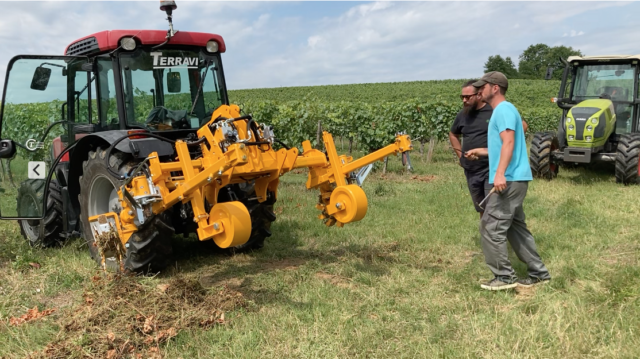
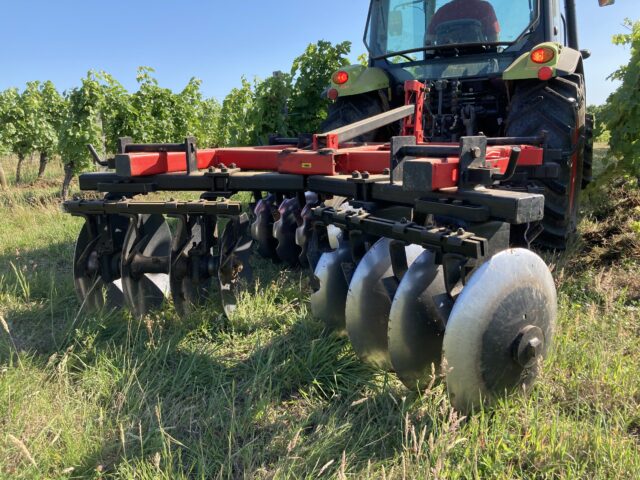
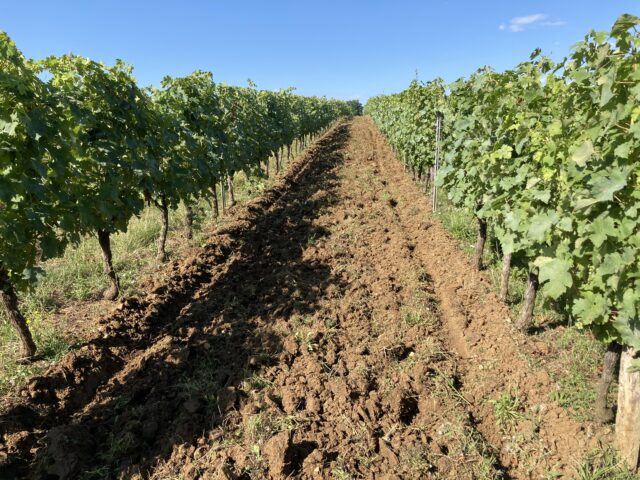
And finally, the last urgents tasks – mowing and epamprage. To avoid chemicals, we do epamprage with a small, sharp shovel to cut the growth shooting out at the base of the vines. Temperatures are now 100 degrees F in the afternoon, (more worries about climate change) so Julien & John start at 5 am. 25 acres will take about a week.
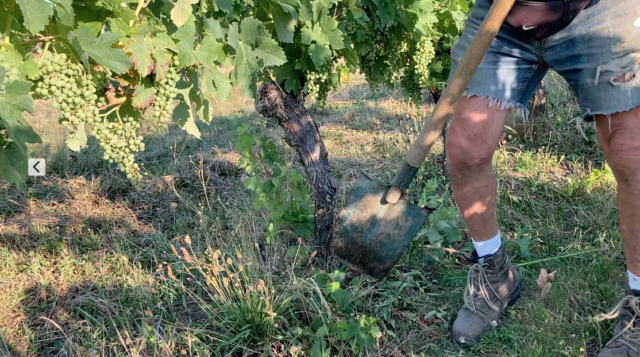
Then Julien did what most vignerons do. Take the young family away for a little holiday, to rest up before the intense harvest and fermentation work.
Good thing. After the draining heat and the failure of our Rain Dances, they injected youthful energy and cheer into our new project.
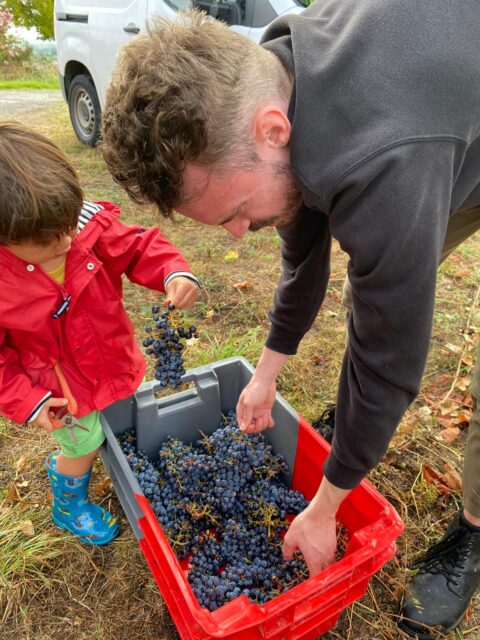
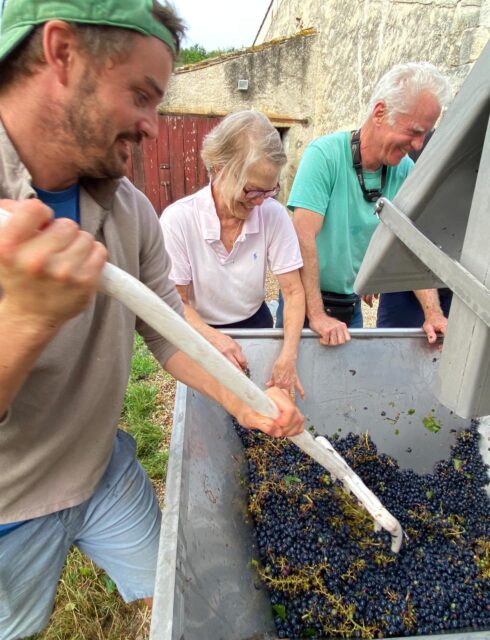
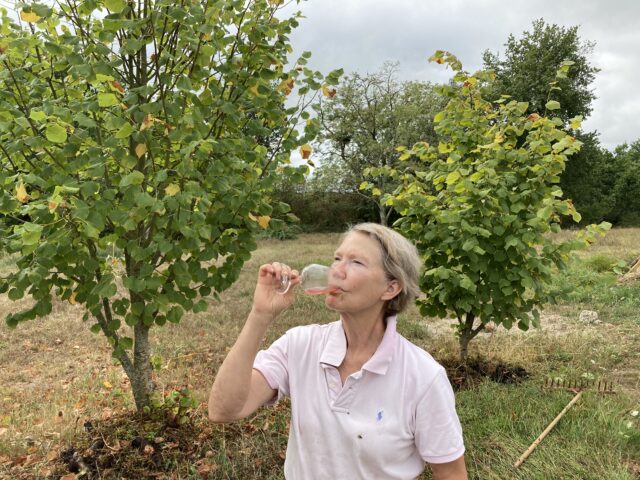
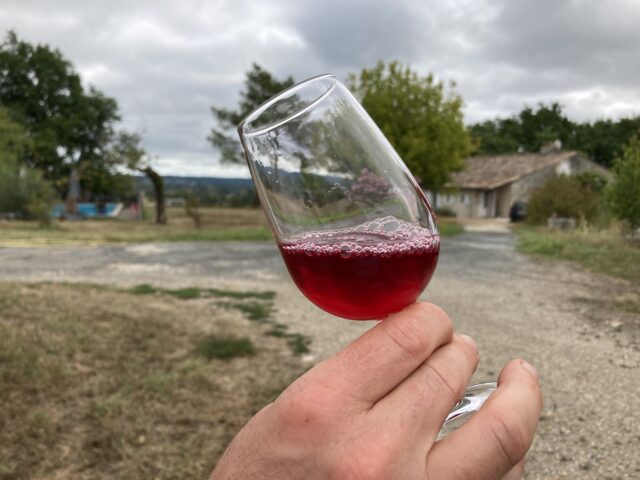
And now in the chai, we nurture the latest La Tourbeille offering. This is a short “aeration” of the Bubbly tank: the juice pours out of the bottom and is sent back to the top. John explains to a visitor that the yeast need a bit of oxygen at this point in the fermentation cycle to do their work.
A year ago we knew were embarking on unknown waters. Turns out it was even more complicated than we had foreseen. Clearly, Julien’s wish wasn’t a joke or even an understatement.
It was a prayer.
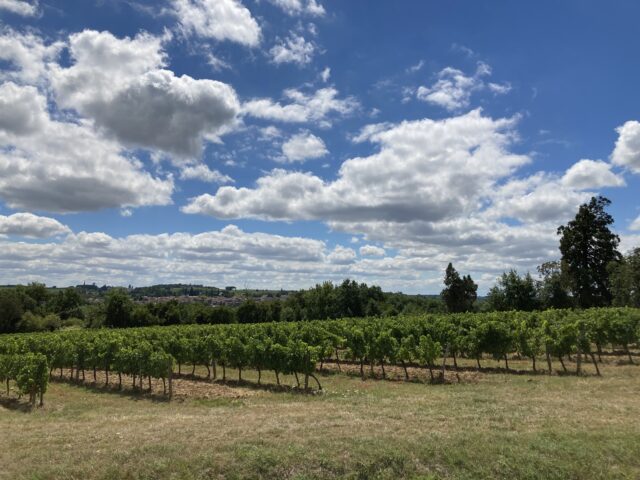
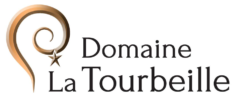
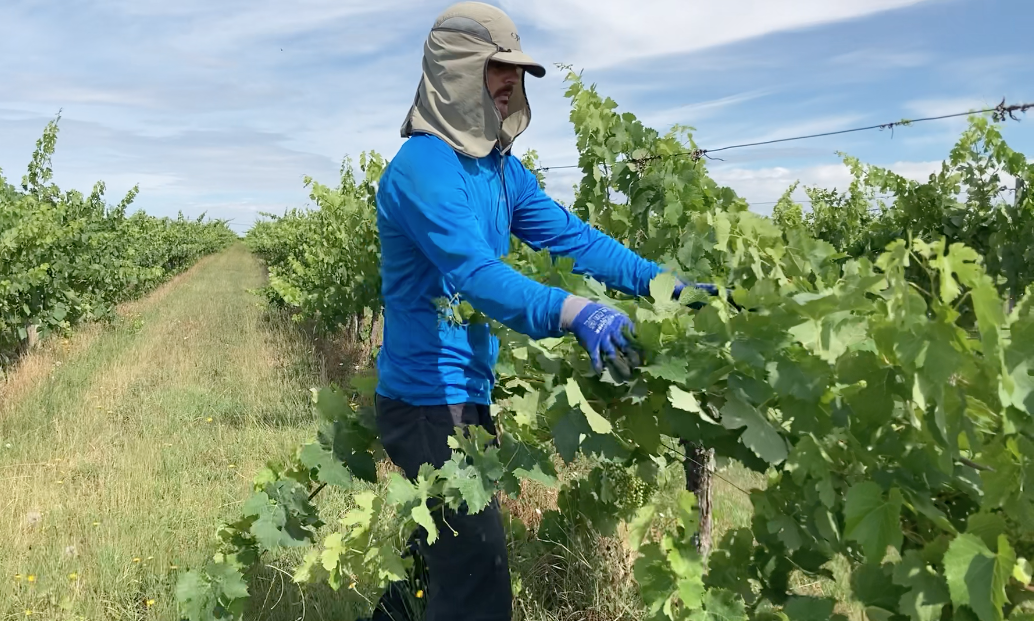
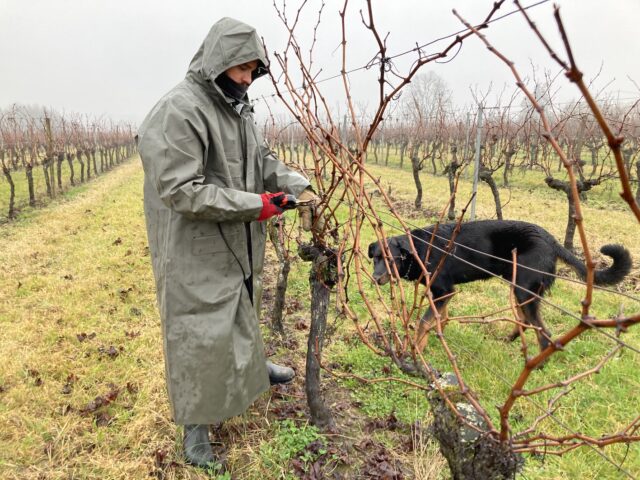

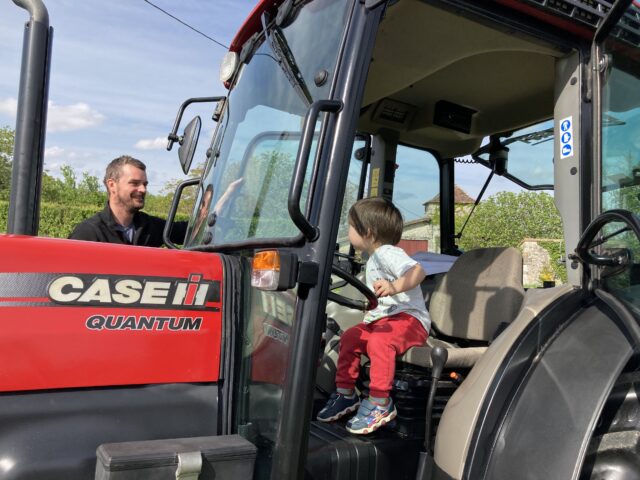
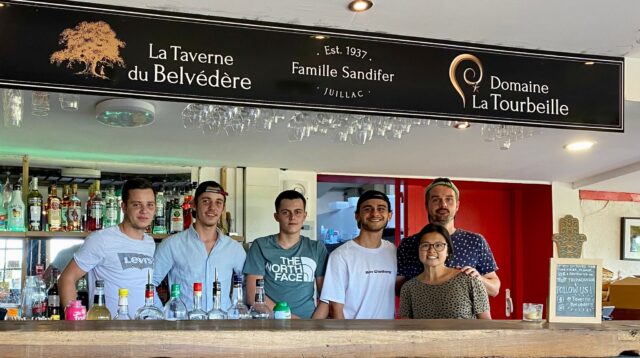
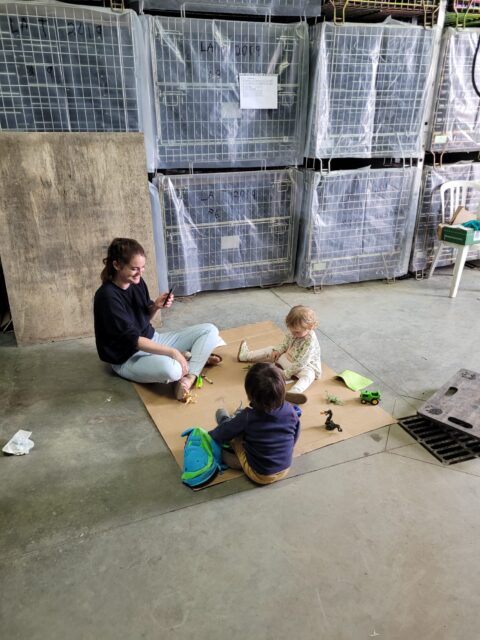
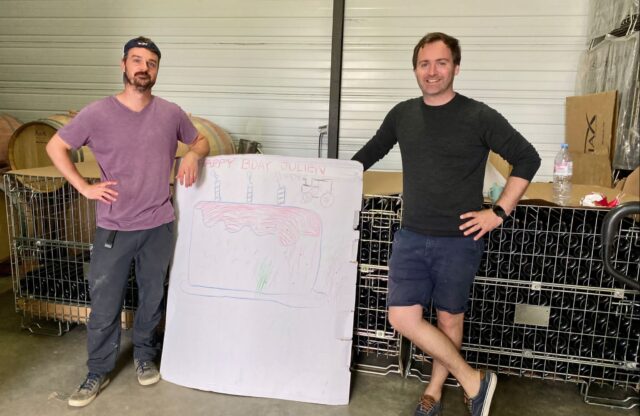
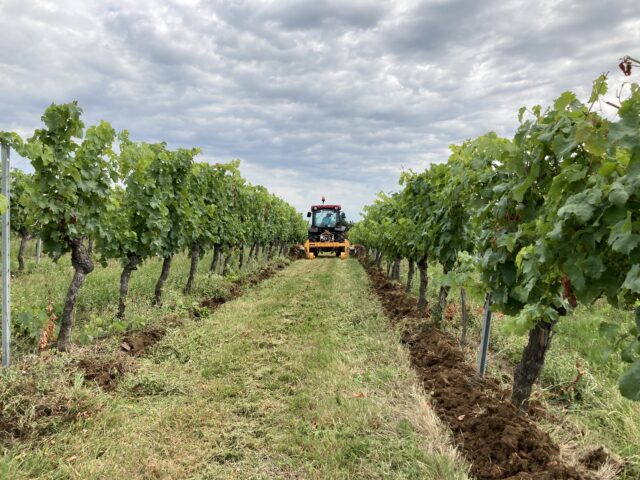

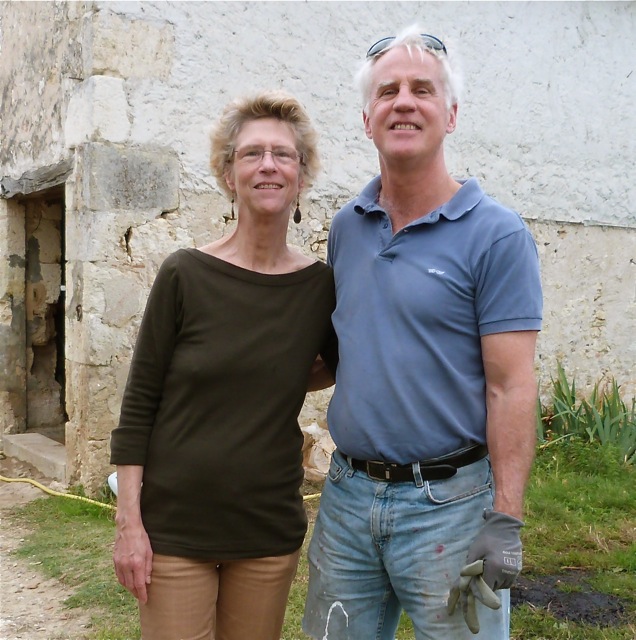
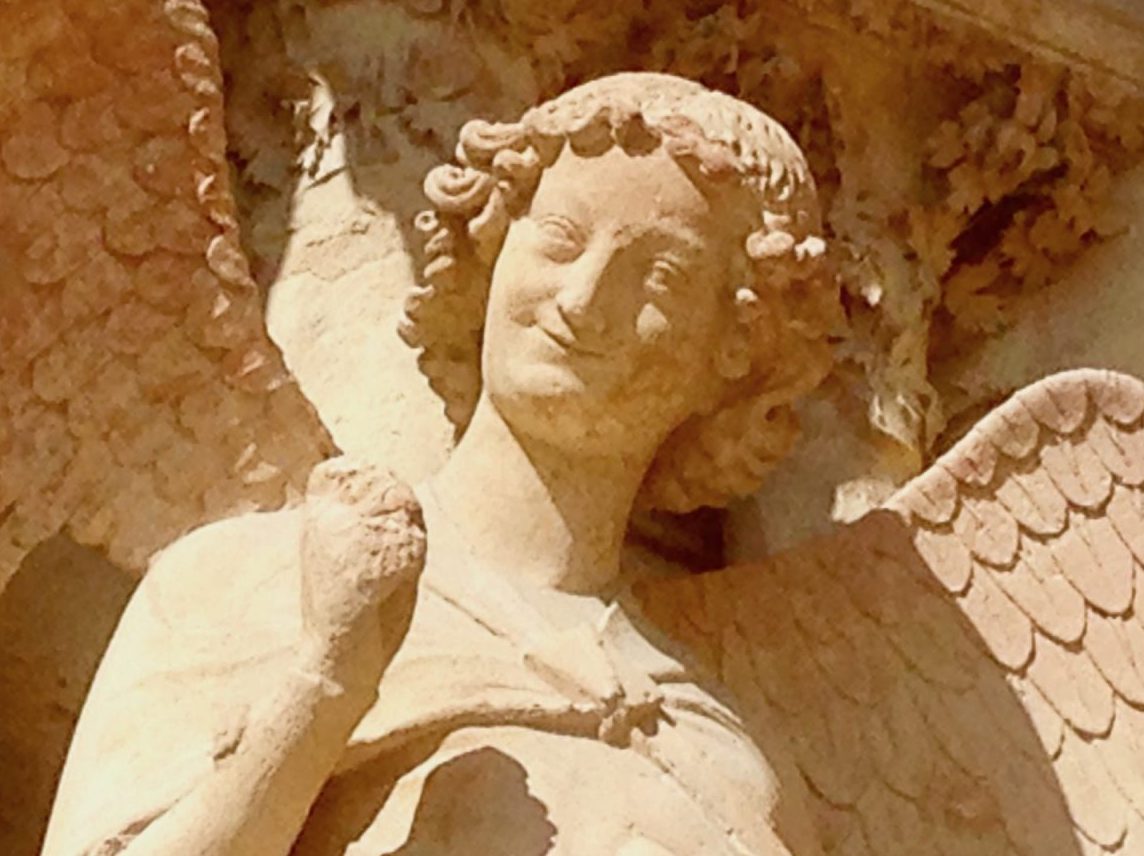
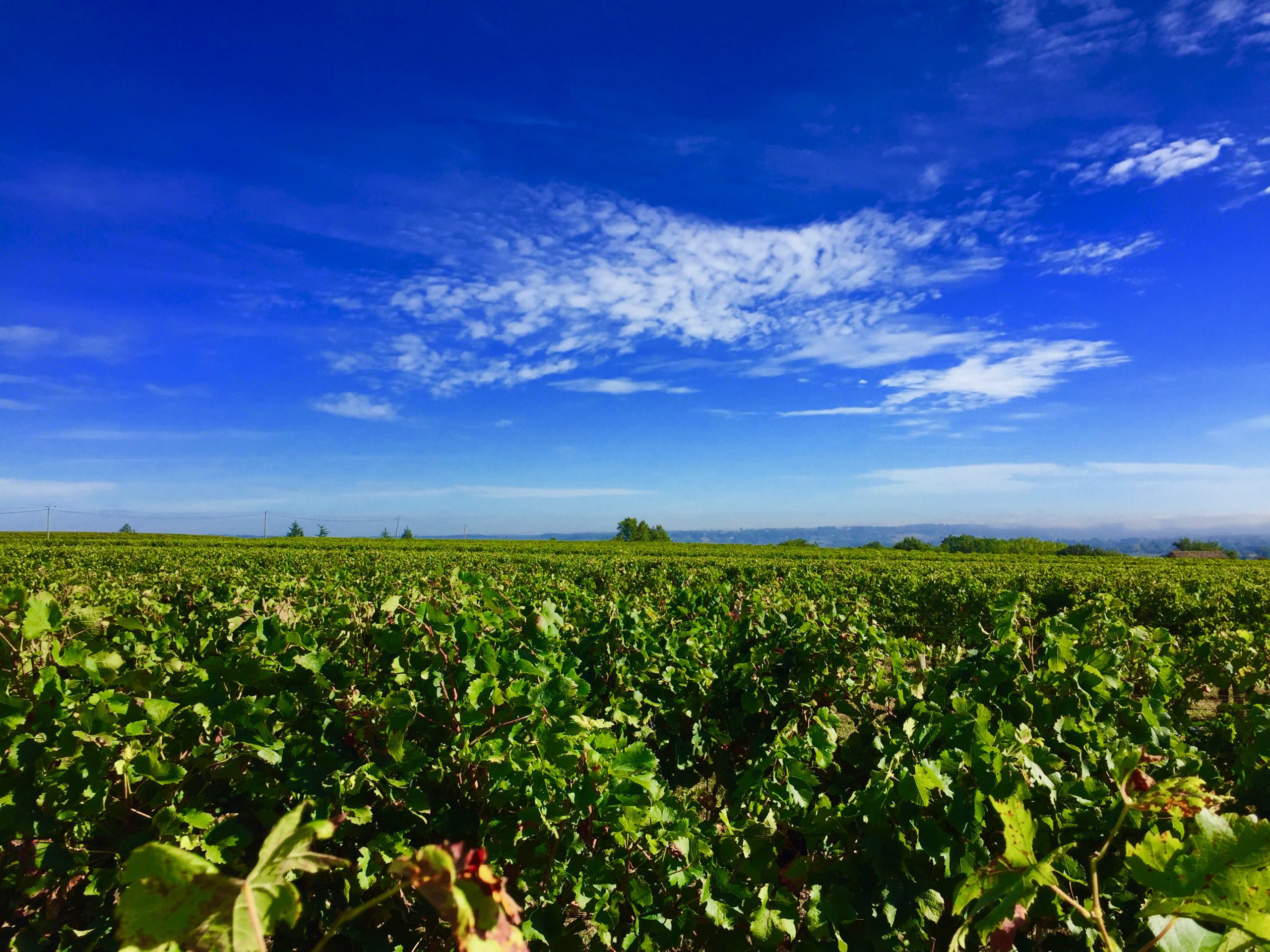
4 thoughts on “Julien’s Wish (A Vigneron’s Year in Pictures)”
Oh this is so fabulous, Mary. What a lovely journal of the year’s trials and joys.
que de travail pour obtenir du bon vin , bonjour à la famille Sandifer ma chère Mary et félicitations au travailleurs de la vigne
Oh Mary this was great. I loved it! Thanks for sharing.
Super interesting—thanks for documenting this!